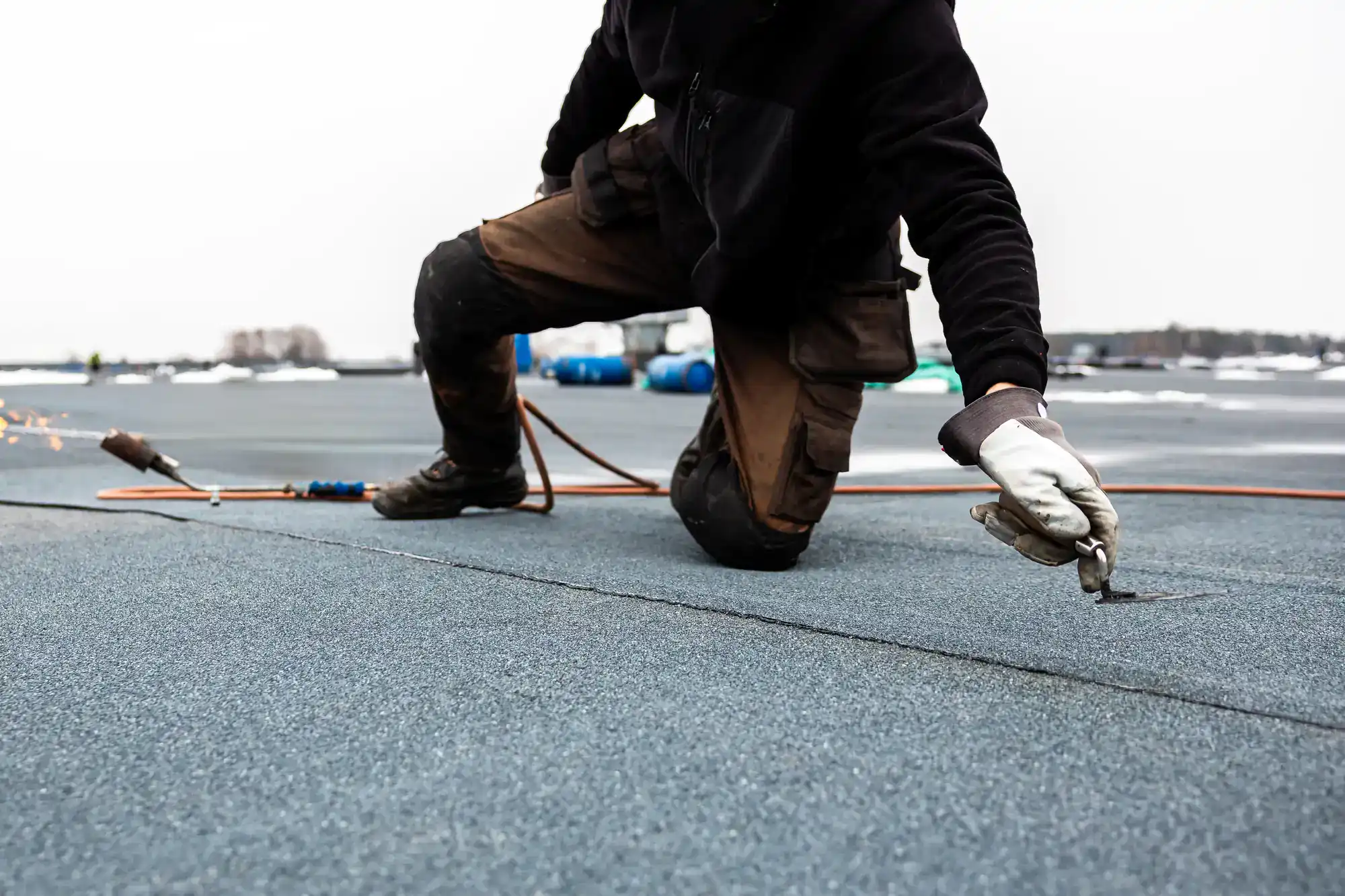
Hear from Our Customers
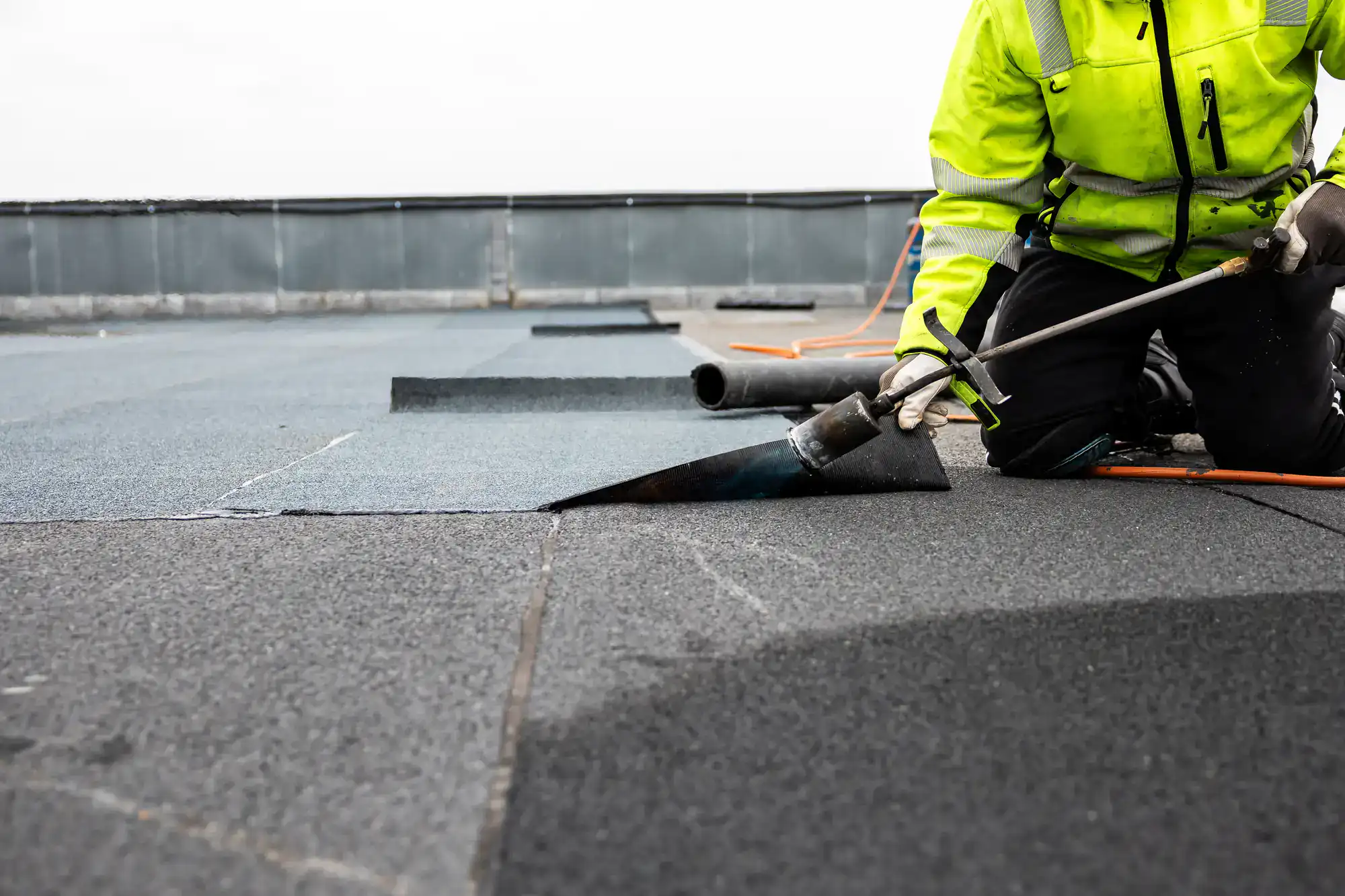
That constant worry about your flat roof ends here. No more rushing upstairs during every heavy rain to check for new leaks. No more wondering if that small water stain is about to become a major disaster.
When we complete your flat roofing project, you get something invaluable: confidence. Confidence that your roof will handle Long Island’s worst weather. Confidence that you won’t wake up to water damage destroying your expensive finishes. Confidence that comes from a roof system designed specifically for coastal conditions and installed by contractors who understand what works in Woodsburgh.
Your flat roof becomes what it should be—invisible protection you never have to think about.
Expressway Roofing and Chimney Inc has built our reputation solving the flat roofing problems that coastal Long Island creates. We know exactly what salt air does to different membrane materials and how winter freeze-thaw cycles find every weak point in a roofing system.
Your Woodsburgh neighbors choose us because we don’t just patch problems—we prevent them. When you own a home worth nearly two million dollars, you need contractors who understand that your roof isn’t just about keeping water out. It’s about protecting your investment, maintaining your property values, and ensuring your family’s comfort through every season.
We’ve spent years perfecting flat roofing solutions that actually work in this environment, not just survive it.
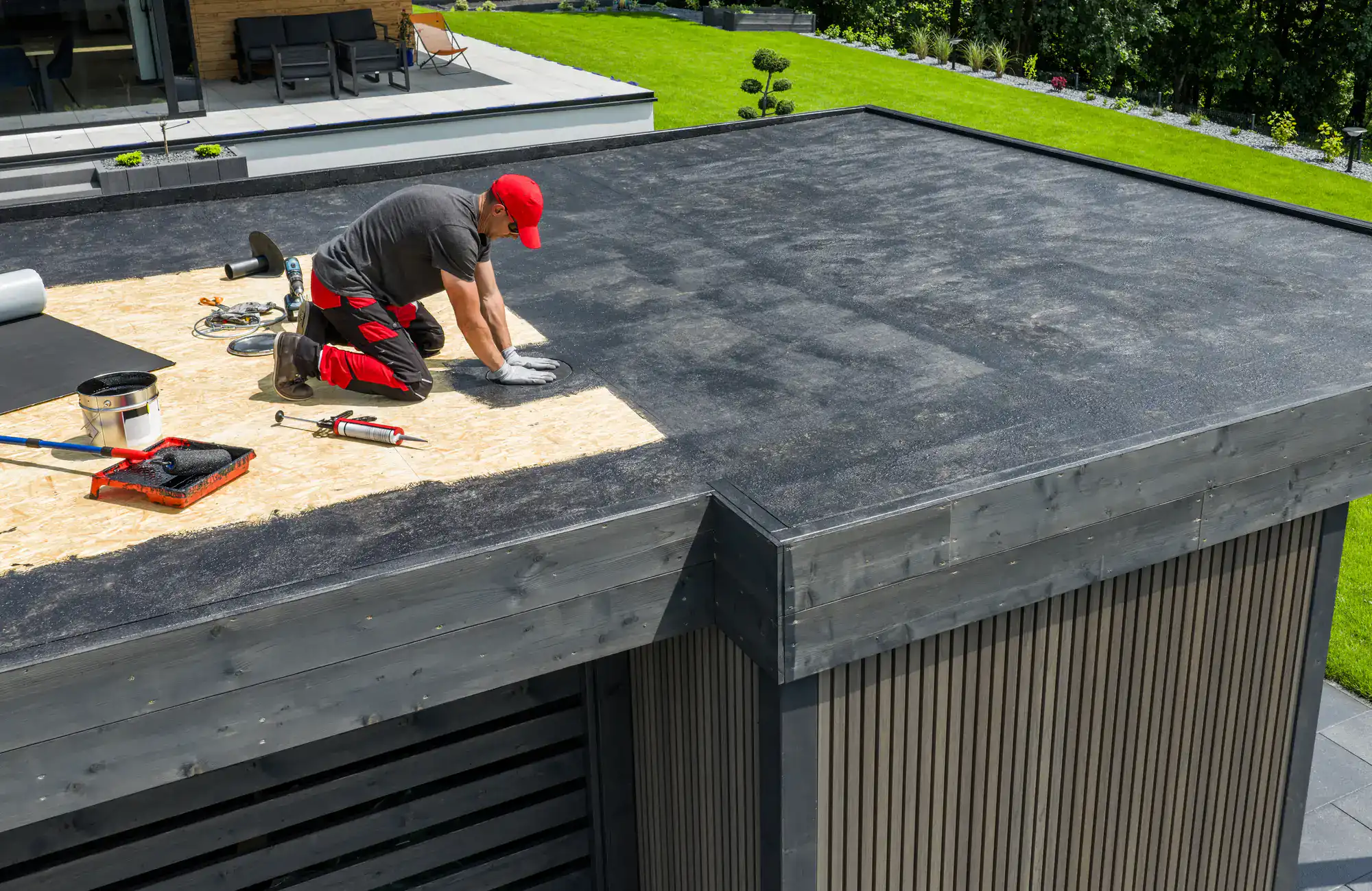
We start every project with a comprehensive inspection using professional-grade infrared scanning and moisture detection equipment. This shows us exactly what’s failing, what’s at risk, and what’s still performing well. No assumptions, no surprises later.
Next comes the honest conversation about your options. Whether TPO makes sense for your energy efficiency goals, EPDM offers the best durability for your specific conditions, or modified bitumen handles your roof’s traffic patterns, we explain the real differences and help you choose what’s actually best for your situation.
During installation, we handle every detail that prevents future problems. Proper drainage slopes, salt-resistant fasteners, professional flashing work, and membrane installation that meets manufacturer specifications. We protect your landscaping, work efficiently to minimize disruption, and clean up completely when we’re done. You get a roof that’s built to handle decades of Long Island weather.
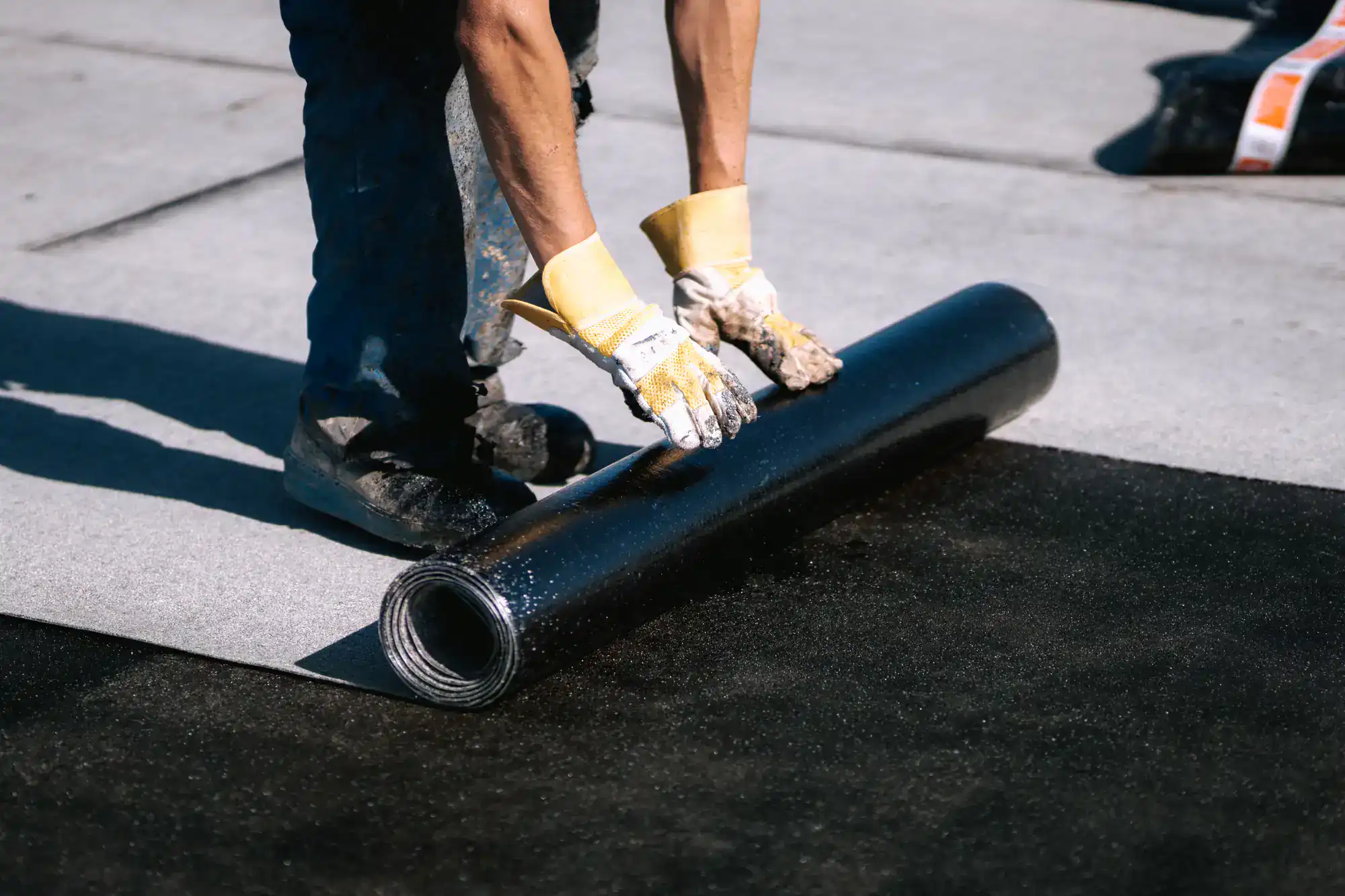
Ready to get started?
Our flat roofing services cover every need your Woodsburgh property has. We install and repair TPO roofing, EPDM rubber roofing systems, and modified bitumen applications. We handle emergency leak detection and repair, complete roof replacements, and preventive maintenance programs that keep small problems from becoming expensive disasters.
What makes our service different in Woodsburgh is our deep understanding of coastal conditions. We use corrosion-resistant materials designed for salt air exposure. Our drainage solutions account for Long Island’s heavy rainfall patterns and snow loads. We select membrane materials that perform reliably through our humidity swings and temperature extremes.
Every flat roofing project includes proper insulation strategies to prevent ice dams, professional flashing details around all penetrations, and waterproofing systems engineered for our specific climate challenges. We’re solving the root causes of flat roof failures in this area, not just treating symptoms.
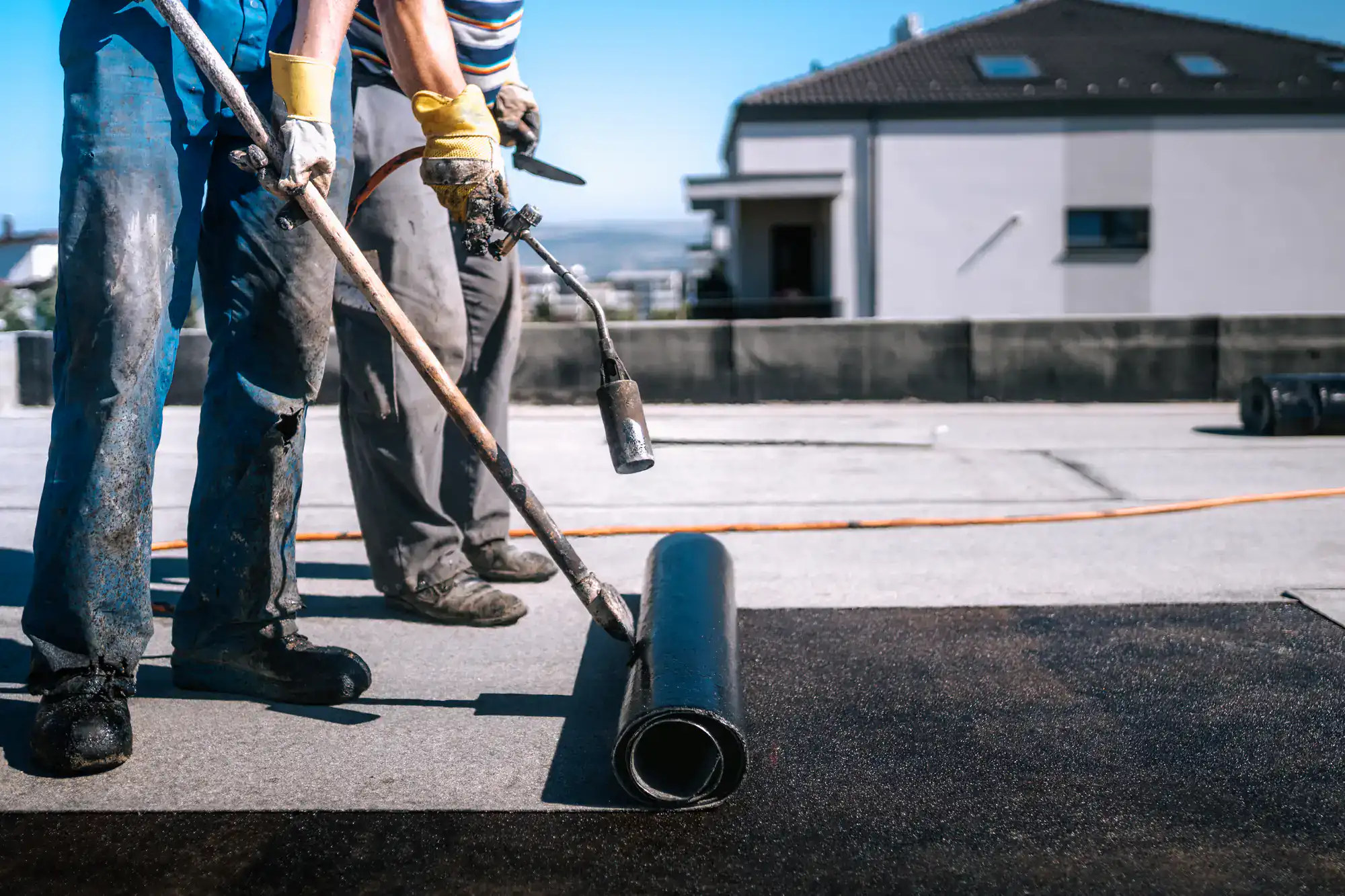
With quality materials and proper installation, flat roofs in our area typically last 15-30 years. However, Long Island’s harsh winters, intense summer heat, and salt air can significantly shorten that lifespan without the right approach and regular maintenance.
The key is choosing materials specifically designed for coastal conditions and having them installed by contractors who understand our unique challenges. TPO membranes offer excellent UV resistance and energy efficiency. EPDM provides superior flexibility for our freeze-thaw cycles. Modified bitumen delivers exceptional durability for high-traffic applications.
Regular professional maintenance makes the difference between a roof that lasts 15 years and one that protects your investment for 30 years. We recommend annual inspections and immediate attention to any issues to maximize your roof’s performance and lifespan.
Standing water is the biggest culprit. When water sits on your flat roof for more than 48 hours after rain or snow melt, it permanently damages roofing materials and voids manufacturer warranties. Poor drainage design, inadequate slope, or clogged drains all contribute to this problem.
Long Island’s heavy rains and snow loads make proper drainage critical. Water that can’t escape finds its way through membrane seams, around penetrations, or through areas weakened by repeated freeze-thaw cycles. Salt air also accelerates the deterioration of flashing and fasteners, creating additional entry points.
The solution is proper installation from the start—adequate slope, correctly sized drainage systems, salt-resistant materials, and professional flashing work. Most leak problems are preventable with the right design and installation approach.
For most Woodsburgh properties, TPO roofing offers the best combination of performance and value. It reflects heat to reduce cooling costs, resists UV damage from our intense summer sun, and handles coastal conditions well. TPO also provides excellent energy efficiency, which matters when you’re cooling a large home.
EPDM rubber roofing is another excellent choice, especially for roofs that experience significant temperature swings. It stays flexible in cold weather and handles our freeze-thaw cycles without cracking. EPDM also has a proven track record in coastal environments.
Modified bitumen works best for commercial applications or residential roofs with regular foot traffic. It offers superior puncture resistance and durability but requires more maintenance than membrane systems. The right choice depends on your specific roof design, usage patterns, and performance priorities.
Proper slope is the foundation of effective flat roof drainage. We design a minimum 1/4 inch per foot slope toward all drainage points, ensuring water moves efficiently off the roof surface rather than collecting in low spots.
We also strategically position and properly size all drains, scuppers, and overflow systems. When existing roofs have drainage problems, we can add tapered insulation systems to create proper slope or install additional drains in problem areas.
Regular maintenance is crucial too. We keep all drainage systems clear of leaves, debris, and ice that could cause backups. During our maintenance visits, we also check for any settling or structural issues that might create new low spots where water could collect.
Yes, we understand that roof emergencies don’t wait for business hours. When water is coming through your ceiling, every minute matters to prevent damage to your home’s interior and expensive finishes.
We respond quickly to emergency calls and carry the materials needed to provide immediate protection while we assess the full scope of necessary repairs. Our emergency service focuses first on stopping active leaks, then on providing permanent solutions that prevent future problems.
We use advanced leak detection equipment to locate the exact source of problems, even when water is entering far from where it’s appearing inside. This ensures our emergency repairs actually solve the problem rather than just treating symptoms. Every emergency call also includes a comprehensive evaluation to identify and address any underlying issues.
Most manufacturers require documented bi-annual maintenance and prompt reporting of any problems within 60 days to maintain warranty coverage. Failing to meet these requirements gives manufacturers an easy way to deny warranty claims.
We provide comprehensive maintenance programs that include professional inspections twice yearly, complete drainage system cleaning and testing, membrane seam inspection and resealing as needed, and protective coating applications that extend roof life.
Our maintenance visits also include detailed documentation that satisfies warranty requirements and helps identify small problems before they become major repairs. We recommend scheduling maintenance in spring and fall to prepare for and recover from our harshest weather seasons. This proactive approach saves money long-term and ensures your warranty protection remains valid.